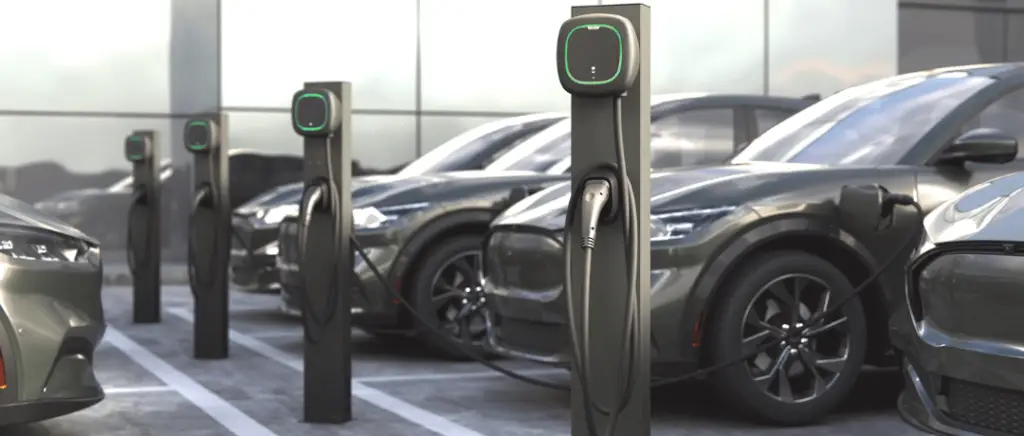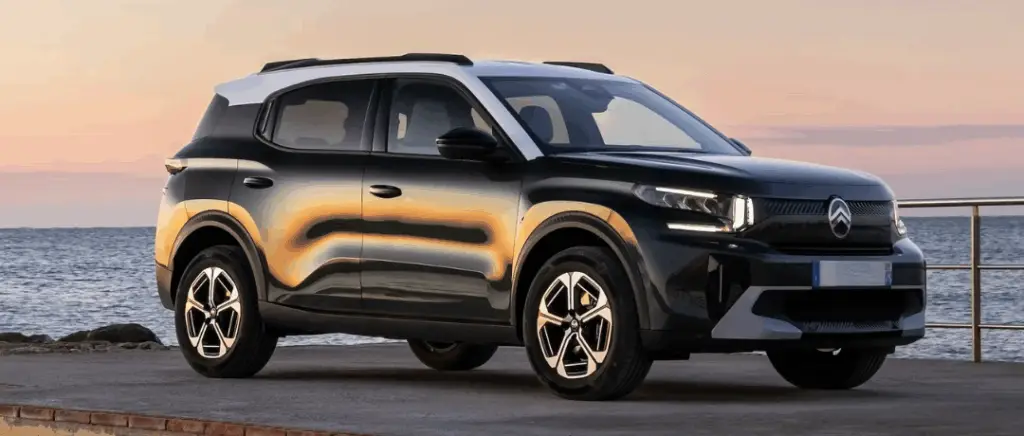Criteria to consider when choosing a recharging point
But before we delve into the nitty-gritty of the subject and decipher the various Wallbox Pulsar, let's take a moment to look at the key criteria to consider when choosing THE ideal charging point for your electric vehicle and your everyday needs.
The rating of your electricity meter
Before installing a charging point for your electric car, it's essential to check the power rating of your electricity meter.
The home charging points vary in power, from 3.7 kW à 22 kW. The 3.7 kW and 7.4 kW terminals operate in single-phasewhile those of 11 kW and 22 kW require a three-phase meter. However, for safety reasons, the power of your electricity meter must be higher than the power of the bollard you want to install.
Before installing a charging point, it's essential to check the capacity of your domestic electrical installation. In other words, your meter must be capable of handling the additional power required by the charging point.
Here are a few things to bear in mind:
- Your usual power consumption If you frequently use energy-hungry appliances (oven, electric heater, etc.), you will need to take this extra load into account.
- The desired recharging power Take into account the time you usually have to charge your vehicle. A more powerful charging point will allow faster charging.
You may need to upgrade your meter if your current installation cannot supply the required power.
💡Did you know ? You can opt for a load-shedding system to avoid any disjunction problems in your home.
Your recharging requirements
La power of the charging point is a a determining factor in the time needed to recharge your vehicle completely :
- 3.7 kW to 7.4 kW Sufficient for a full night's charge, ideal for users who can leave their mobile phone at home. vehicle plugged in for several hours.
- 11 kW to 22 kW Suitable for users who need quick refillsThis is particularly important for people with long commutes, such as professionals.
In short, the more battery is greater, the higher the charging power will need to be to reduce charging time.
For example, for a 50 kWh battery such as the Tesla Model 3a 7 kW terminal is generally sufficient for a fully charged in about 7 hours.
Worth noting : Installing your recharging solution a power greater than or equal to 3.7 kW must be carried out by a IRVE installer.
What's more, there are several types of recharging connector for electric vehicles. Make sure the charging point you choose is compatible with your vehicle's connector:
Type 1 :
Also known as J1772, this connector is mainly used for used for electric vehicles manufactured in North America and some Asian models. It is designed for costs in alternating current (AC) and offers a charge power maximum generally from 3.7 kW to 7.4 kW single-phase.


Type 2 :
This is the standard for charging in Europe, and is used for electric vehicles manufactured on the continent. This connector is designed for charging in alternating current (AC) and can withstand single-phase power ratings from 3.7 kW to 22 kWand up to 43 kW three-phase. Note that there is also the T2S typewhich also includes a shutter. However, it is less suitable for American and Asian vehicles: users should check compatibility for imported vehicles.
💡Good to know All electric cars are compatible with all type 2 charging stations. In France, there are type 3 charging points that can recharge a type 2 car, but to do so you will need a T2-T3 adapter.
CCS Combo :
It's a connector that combines Type 1 or Type 2 with two additional contacts for recharging in direct current (DC). It is designed for fast and ultra-fast refillswith power ratings from 50 kW to over 350 kW.


CHAdeMO :
This connector is mainly used for fast recharging in direct current (DC). However, CCS is becoming increasingly popular, and some new models no longer offer CHAdeMO support.
The presence of a attached cable or a universal socket
In addition to the capacity of your electricity meter and your recharging needs, the presence of a attached cable or a plug is a a criterion not to be neglected when making your choice.
Each of these options has its own advantages and disadvantages, depending on the user's needs and preferences.
| CÂBLE ATTACHÉ | PRISE UNIVERSELLE | |
|---|---|---|
|
BENEFITS
|
Practical and easy to use: the cable is always to hand, reducing the preparation time for each recharge.
|
Great flexibility: This means you can use different types of cable depending on the specific needs of the vehicle, which is particularly useful and relevant if you own several electric vehicles or plan to change vehicles in the future.
|
|
|
Less risk of theft: As the cable is permanently attached to the bollard, it is less likely to be taken away or damaged by third parties.
|
Adaptability: You can easily replace or update the cable without having to change the whole terminal. This means you can adapt the length of the cable or change the type of connector as your needs change.
|
|
|
Durability and robustness: Tethered cables are generally designed to withstand the elements and everyday wear and tear. They are securely fixed, which can extend their lifespan compared with detachable cables.
|
Easy to transport: detachable cables are easier to transport and store. You can take them with you when you travel, which is handy if you plan to charge your vehicle at various public or private charging points.
|
|
DISADVANTAGES
|
Less flexibility:
You'll need to choose a terminal that's compatible with the appropriate cable for your main vehicle, which can be a problem if you change vehicles or host guest vehicles.
|
Risk of loss or theft: Detachable cables can be more easily lost, stolen or damaged, which could lead to additional costs for replacement.
|
|
|
Fixed cable length :
The length of the cable is determined at the time of purchase and cannot be adjusted. If the cable is too short or too long for your recharging space, this can lead to constraints and additional costs.
|
Cable management: Managing a detachable cable can be less convenient, requiring the cable to be carefully stored after each use to avoid tangling or damage.
|
In short, the choice between a charging point with a tethered cable or one with a universal plug largely depends on your personal needs and lifestyle. If you prefer the simplicity and the practical an all-in-one solution, a terminal with attached cable might be the best option.
On the other hand, if you are looking for a flexibility and maximum adaptability in the long term, a terminal with universal socket would be more appropriate.
To find out more : Which electric recharging point should I choose?
What are the four elements that differentiate one charging point from another?
With so many charging points available on the market, it can be difficult to know which one to choose. To help you make an informed choice, it's crucial to understand the key elements that differentiate one charging point from another.
The RFID badge
One of the essential features to consider when choosing a recharging point is the presence of a RFID badge access control (Radio Frequency Identification). This technology, which uses radio frequency identification, offers a number of advantages for electric vehicle users.
The RFID badge makes it possible to restrict access to the charging pointThis ensures that only authorised users can use it. This is particularly useful in certain contexts where it is necessary to manage the use of the terminal in a secure way, such as in :
- companies,
- condominiums,
- or public car parks.
Terminals equipped with RFID technology can be used to accurately track the use of each charge point. Each user has a single badgeThis makes it possible to monitor electricity consumption and generate detailed usage reports. This functionality is also ideal for fleet managers who want to optimise the management of their electric vehicles.
To consult : Fleet management: how do you choose your fleet management software?
In addition, the use of an RFID badge is simple and intuitive. Simply wave the badge in front of the reader to activate charging. This method is fast and avoids complications linked to mobile applications or other control devices.
The shutter
When choosing a charging point for your electric vehicle, the shutter is a crucial element to consider.
As briefly explained above, a shutter is a device that allows you to open and close a shutter. safety device which prevents accidental insertion of foreign bodies into the charging socketThis reduces the risk of electric shock and damage.
The shutter plays an essential role in the safety of the recharging point. At blocking access to electrical contacts when the terminal is not in use, it protects :
- users,
- curious children,
- and pets.
But that's not all: a quality shutter also contributes to the durability of the charging point. By preventing the penetration of dustof debris andhumidityIt helps to keep the internal components in good working order.
What's more, a bollard fitted with a shutter that complies with European safety standards (such as the NF C 15-100) gives you extra peace of mind. You can also benefit from the tax credit.
Read more : Aid for the installation of charging points in 2024
In fact, the presence of a shutter is a regulatory requirement in France for charging points installed in public and private places. This is particularly important for companies and condominiums wishing to offer recharging solutions to their employees or residents.
Modern shutters are designed to offer a high level of intuitive operation. They open automatically when the charging connector is inserted and close immediately when it is removed. This ease of use makes everyday recharging quicker and more convenient, without compromising on safety.
The type of connectivity
When it comes to choosing a charging point for your electric vehicle, the type of connectivity is an essential criterion that can greatly influence your user experience.
Here are the 4 types of connectivity that differentiate one charging point from another.
Bluetooth
Some charging stations, such as the Wallbox Pulsar Plus, are equipped with Bluetooth connectivity.
This technology enables quick and easy terminal configuration via a mobile application. It's ideal for users who want to manage their top-up from a short distance, without needing an Internet connection.
For example, you can :
- check the state of charge,
- start or stop recharging,
- and adjust the settings directly from your smartphone.
Wi-Fi
Wi-Fi connectivity offers long range and enables control and monitor your charging point from anywhere, as long as you have an Internet connection.
Charging stations with Wi-Fi, offer a wide range of advanced functionalities such as :
- remote management,
- automatic software updates,
- and the ability to monitor energy consumption in real time.
This provides additional flexibility and convenience for users who want full management of their terminal, even when they're away from home.
your charging point
Ethernet
Some charging stations also offer Ethernet connectivity, which is an optional extra. more stable and reliable compared with Wi-Fi, especially in areas where Wi-Fi reception may be poor.
Ethernet guarantees constant, uninterrupted connectionThis is essential for important software updates and for optimum load management.
This option is often preferred for professional installations or in environments where connection reliability is paramount.
4G/5G
For places where neither Wi-Fi nor Ethernet is practical, some charging points can be equipped with 4G or 5G connectivity thanks to its SIM port.
This option allows the terminal to connect directly to cellular networksoffering maximum flexibility in terms of location. This can be particularly useful for terminals installed in :
- public car parks,
- remote areas,
- or properties where the installation of Ethernet cables is complicated.
The touch screen
A touch-sensitive screen makes interacting with the charging point much simpler. Thanks to a intuitive interfaceit is possible:
- from start andstop charging,
- programme specific time slots,
- and check the charge status in real time.
This ease of use is particularly appreciated by novice users, who can sometimes find traditional kiosks complicated to operate. What's more, a touchscreen gives modern, sophisticated look to the charging point, perfectly integrated into a domestic or professional environment, like the Wallbox Commander 2.
The Pulsar Wallbox range
The Pulsar Wallbox range stands out for its innovation and its practical. But with several models available, how do you choose the one that best meets your specific needs?
Whether you're looking for a compact, efficient solution or a terminal with advanced features, the Pulsar Wallbox range offers options to suit every driver profile.
Wallbox Pulsar Plus
The Pulsar Plus Wallbox is available in several power configurationsranging from 7.4 kW to 22 kW. This flexibility means you can choose a charging point that matches the capacity of your electrical installation and the specific needs of your vehicle.
What's more, Pulsar Plus is waterproof and dustproof. With its IP54 and IK08 protectionThis means it can be installed safely both indoors and outdoors.
Equipped with connectivity Bluetooth and Wi-FiPulsar Plus offers an optimised user experience thanks to the mobile application myWallbox. This application allows you to :
- monitor recharge status in real time,
- schedule recharging sessions,
- and consult your consumption history.

These intelligent features are particularly useful for maximising energy efficiency and reducing costs.
Wallbox Pulsar Plus Socket

La Wallbox Pulsar Plus Socket is a wall-mounted charging point which combines performance and simplicity.
With its modern design and compactThe Pulsar Plus Socket fits perfectly into any space. The installation of the Pulsar Plus Socket Wallbox is simplified by its modular design. As a wall-mounted terminal, it can be easily installed in a variety of environments, whether in :
- a garage,
- a car park
- or outside.
Although the Socket model is not not fitted with an integrated cableIt takes charge of high load capacities up to 22 kW160 km per hour. This means your eco-friendly vehicle can be recharged quickly, considerably reducing waiting time. What's more, this charging point is the only one with a directly integrated shutter.
💡Did you know ? Unlike models with an attached cable, this model has a type 2 socketThis means you can use any charging cable compatible with your vehicle.
Like the Pulsar Plus, this charging solution also incorporates intelligent functions such as connectivity Bluetooth and Wi-Fi. As a reminder, these features allow you to control and monitor your recharging sessions via the dedicated myWallbox mobile application, optimising your energy management allowing you to monitor consumption in a practical way.
But that's not all: optional intelligent charging management features such as the Power Boost and the Dynamic Power Sharing are available.
Read more : Smart charging: what is it?
Wallbox Pulsar Max
The Pulsar Max Wallbox is designed for quick and easy installation. Once installed, its intuitive user interface makes it easy to use, even for the less technophile. Its flexible mounting options and detailed installation manual make the installation process much easier. What's more, it's compatible with type 1 or type 2 cables for recharging all models of electric car.
As well as being easy to install to cut installation time and costs, safety is a priority with the Pulsar Max Wallbox. It features integrated protection against DC leakage (DC), eliminating the need for an additional earth leakage switch.

Despite power of up to 22 kWthe Pulsar Max retains a compact design and discreetIt fits perfectly into any domestic or professional environment. Particularly resistant with a protection rating of IK10With its modern, well-groomed appearance, it is an aesthetically pleasing choice that also offers optimum functionality.
Wallbox Pulsar Pro

The Pulsar Pro Wallbox stands out from the Pulsar range because of its dedicated features for professionals.
Specially designed for condominiums and places of workThe Pulsar Pro is perfectly suited to the needs of shared charging, with a charging power of up to 22 kW. Here are its key features:
- Dynamic load management : Intelligently distribute the available charging power between several electric vehicles connected simultaneously.
- Integrated energy meter : The Pulsar Pro accurately tracks the energy consumption of each charge.
- Advanced connectivity features : The Pulsar Pro is compatible with the Wallbox cloud for centralised management of kiosks and the implementation of billing systems. In addition to Wi-Fi and Bluetooth, it offers 4G connectivity.
Note that the Wallbox Pulsar also offers residential terminalslike the Pulsar Plus.
Summary table of Wallbox Pulsar charging points
To make your decision easier, we've compiled a table summarising the various technical characteristics of Pulsar Wallboxes to help you find the ideal solution for your needs and expectations.
| Caractéristiques | Wallbox Pulsar Plus | Wallbox Pulsar Plus Socket | Wallbox Pulsar Max | Wallbox Pulsar Pro |
|---|---|---|---|---|
|
Charging power
|
7.4 kW, 11 kW and 22 kW
|
7.4 kW or 22 kW
|
7.4 kW, 11 kW and 22 kW
|
7.4 kW, 11 kW and 22 kW
|
|
Cable
|
Attached, 5m or 7m
|
Socket with shutter
|
Attached, 5m or 7m
|
Attached, 5m or 7m
|
|
Connector
|
Type 1 and 2
|
Type T2S with shutter
|
Type 1 and 2
|
Type 2
|
|
Connectivity
|
Wi-Fi and Bluetooth
|
Wi-Fi and Bluetooth
|
Wi-Fi and Bluetooth
|
4G, Wi-Fi and Bluetooth
|
|
Operating
temperature
|
- 25°C to 40°C
|
- 30ºC to 40ºC (50ºC at reduced power)
|
- 25ºC to 50ºC
|
- 30 ºC to 50 ºC
|
|
Protection class
|
IP55 / IK10
|
IP55 / IK10
|
IP55 / IK10
|
IP55 / IK10
|
|
Weight
|
1 kg (without cable)
|
2.5 kg
|
1.3 kg (without cable)
|
1.3 kg (without cable)
|
Conclusion
To sum up, the Pulsar Wallbox range offers a a range of recharging solutions for electric vehicles to suit all needs. Whether you're an individual looking for a compact, connected charging point for your home, or a professional managing a company car park requiring intelligent charge management, you're bound to find the model that's right for you.
If you would like to find out more about the tax credit for in-car charging points 2024For more information, see our article on this subject.
You would like toto electric?
Beev offers multi-brand 100% electric vehicles at the best prices, as well as recharging solutions.
































